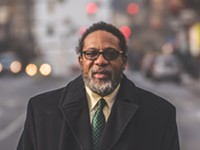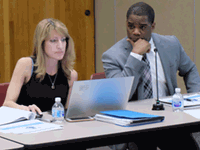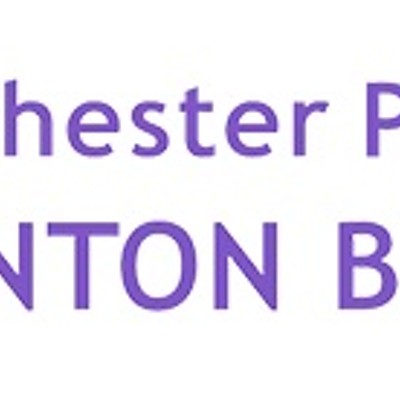[
{
"name": "500x250 Ad",
"insertPoint": "5",
"component": "15667920",
"parentWrapperClass": "",
"requiredCountToDisplay": "1"
}
]
The statistics shouldn't be a surprise to any of us; many of them have been in earlier reports. But still, the numbers are staggering. And so are the rankings those numbers put us in.
Rochester is the fourth poorest city among the 75 largest metro areas in the country. We have the third-highest concentration of people living in high-poverty census tracks.
Compared to other cities our size, we're the worst in child poverty, in the percentage of residents living in extreme poverty, and in the poverty rate of female heads of households.
Worse, many residents have income that puts them above the federal poverty level, but don't have nearly enough money to be self-sufficient. The federal guideline is decades old and doesn't take into account regional differences. Self-sufficiency gives a better picture of the severity of Rochester's poverty.
And while we think of the poor as people who don't have jobs, many of them do. They just don't earn enough to make ends meet.
A new report focusing on the working poor – "Wage Disparities in Monroe County by Race and Gender" – suggests a way to dramatically reduce poverty in the Rochester area. But doing what the report suggests will be both hard and controversial.
The report, which was released late last week, was prepared by the mayor's Office of Innovation and Strategic Initiatives and by the Rochester-Monroe Anti-Poverty Initiative. It contains some of the same statistics we've seen before. But there's plenty of new information – and seeing all of it compiled in one place forces us to face some unpleasant truths:
Ÿ Inequality is built into our wage and hiring structures. We value some kinds of work, and some kinds of workers, far more than we value others. And that discrimination isn't always based on the work's value to society.
Ÿ Racism and sexism are very much alive, both in how we value different types of work and in how we pay workers in all types of jobs. Far more African-Americans and Hispanics are poor than whites. More women are poor than men. And the disparity exists across industry sectors.
Ÿ Unless we change wage scales and personnel practices, poverty in this region will continue.
Poverty has been growing everywhere in the Greater Rochester area – in the city, in the suburbs, in rural areas. But the poor are heavily concentrated in the city. And a lot of job growth has been in the suburbs.
Fueling the concentration of the poor in Rochester: the city's precipitous drop in population – from 318,611 in 1960 to an estimated 208,880 in 2016. That flight occurred primarily among middle-income and upper-income people.
An equally dramatic change occurred in the racial composition of city residents. In 1970, 82.4 percent of city residents were white. In 2010, 43.7 percent were white.
The result: the majority of city residents are poor and African-American or Hispanic. Estimates compiled by the staff of the city and the Anti-Poverty Initiative indicate that fewer than 30 percent of city residents earn enough to be self-sufficient.
Many of them don't have jobs. But many do. And according to the Wage Disparities report, an estimated 13,477 full-time workers and another 17,500 part-time workers aren't earning enough to be self-sufficient. And the part-time workers are much more likely not only to lack self-sufficiency but to be in real poverty.
And looking at current trends in employment doesn't give us much hope for the future. "Currently," says the report, "the health-care and social assistance industry is the largest employment sector, and trends indicate that that will continue."
These are low-wage jobs such as nursing-home workers, home health aides (HHA's), personal care aides (PCA's), child-care workers. In the Finger Lakes region, for example, pay for health-care workers ranges from $11.65 per hour to $12.25 per hour, says the report.
These types of jobs don't require a college education. And not surprisingly, African-Americans and Hispanics make up a disproportionate number of workers in those fields. And they often don't earn enough to be self-sufficient.
An additional problem: Many of these jobs don't offer a path to better ones. Alex Yudelson, Mayor Lovely Warren's chief of staff, gave an example as he walked me through the Wage Disparities report. "Twenty years ago," he said, "if you were a home health aide, it was a path to an RN," which paid better. That path no longer exists.
"According to the Bureau of Labor Statistics' 2015 estimates for Rochester," says the Wage Disparities report, "the total number of low-wage health-care workers is 20,780, and a large proportion, or 7,560, are PCA's. This means that over a third of the workers in the area's top growth sector are earning low wages and unlikely to meet self-sufficiency standards for households with dependents."
"Locally," says the Wage Disparities report, "there is a push to increase the workforce of HHA's and PCA's to meet the needs of a large local disabled and/or aging population," the report notes. "Action for a Better Community recently received a Health Profession Opportunity Grant to train people in poverty for work in these occupations. However, at current pay rates it is unlikely that these newly trained individuals will earn enough to be considered self-sufficient."
Racism plays a part, too. Analysis of census data shows that not only are minorities concentrated in low-wage jobs but even in those jobs, the report says, they earn less than white workers.
Discussions about poverty often overlook one group of Rochesterians: those with disabilities. And yet according to ACT Rochester, more than 42.1 percent of people in Rochester with a disability are living in poverty. That's 22 percent of the poverty population in the city.
Having a disability doesn't always prevent people from holding a job, but a particularly insidious complication actually encourages their poverty. The Wage Disparities report cites a 1938 federal law that allows "sheltered workshops, which predominantly serve those with intellectual and/or physical disabilities, to pay subminimum wages to disabled workers."
"Nationally," says the report, "many of these workers earn less than a dollar per hour."
We've had reports similar to this before, many times. Will anything come out of this one?
There's been some movement, even before work on the Wage Disparities report began. As part of the Anti-Poverty Initiative, the Catholic Family Center has received funding to operate an adult job-skills mentoring program in the city's Beechwood, Marketview Heights, and EMMA neighborhoods.
Representatives of city government and the Regional Transit Service have been discussing the need to change or add bus routes to make transportation to jobs more accessible to residents of Rochester's poorest neighborhoods.
City and RMAPI representatives have been meeting with the leaders of businesses and institutions about the data laid out in the Wage Disparities report, and Yudelson says they've been receptive. Some have agreed to convene other leaders in their field. And Mayor Warren's office says she'll continue to conduct discussions to focus on the issue of wage disparity.
There will be the predictable response: that raising wages will be too expensive, that health care providers, other service providers, and businesses can't afford to pay more than they do. And in truth, fields like health care are experiencing intense stress and uncertainty.
But if Rochester is serious about reducing poverty, all of its employment sectors will have to get serious about the wages of the working poor. City Hall has helped lead the way by pledging to raise the wages of all of its full-time workers to $15 by 2021, more quickly than the state has mandated for Upstate New York. The business community's Unshackle Upstate effort, on the other hand, has been a strong opponent of the movement to raise the state's minimum wage to $15.
It's encouraging that the leaders of some Rochester businesses and institutions have agreed to get others together to discuss the report and its findings about the working poor. That's a good first step. But Rochester has a history of studying problems diligently but then moving on.
There may also be the temptation to pass the poverty problem on to RMAPI and the local agencies that serve the poor. That would be a terrible mistake, but it would be consistent with the way Rochester tends to deal with difficult problems.
As the Wage Disparities report says, the stark data it contains can serve as a starting point. But the report is just an educational vehicle. What the community does with it is what matters.
Raising wages isn't the only thing we need to do to decrease the high poverty level of the city and the region. Job creation, job training, mentoring: all of that is crucial. And the region has begun to focus on those areas.
But if all we do is create more jobs with low wages, we'll have done little to nothing.
Speaking of...
-

Perspectives: Jerome Underwood
Jan 16, 2019 -

Rochester parents: we'd be more engaged, if we could
Dec 14, 2018 -

Yet another attempt to improve city schools
Jul 24, 2018 - More »
Latest in Urban Journal
More by Mary Anna Towler
-

Police reform: advocates on what should come next
Oct 22, 2019 -

Court clears the way for Police Accountability referendum
Oct 17, 2019 -

Dade outlines initial actions on district deficit
Oct 9, 2019 - More »







